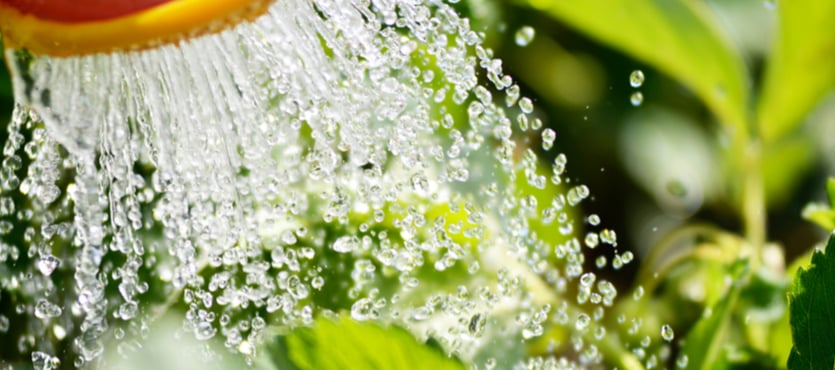Potted plants bring beauty to your home or office, inside and out, as well as a number of benefits. Some plants are easy to care for and thrive without much effort from you, while others can prove a challenge even for the most talented gardener. When you first put in your plants, they look great, but to retain their beauty and appeal, they need the proper care. Here are some helpful hints to help you keep all your potted plants looking beautiful.
Choose the Right Spot
Whether your potted plant will be inside or out, you need to choose the right spot. Each plant requires different levels of light, water, and food to thrive, so it is important to know your plants needs and find the ideal place for it to flourish. It is important to know if your plant prefers direct sunlight, indirect sunlight, or diffused light and chose its place inside or outside your home or office accordingly.
Water and Food
In addition to light needs, your plan also requires the appropriate amount of food and water to grow. While many think underwatering is the biggest challenge, overwatering actually is often the bigger mistake. Planters dry out faster than soil in the ground and can also have more difficulty draining properly as well. Overwatering or underwatering is bad for your plant, but you can solve the problem with a self-watering planter from TerraCast Products. Ensuring adequate drainage can also help, thereby avoiding the deadly root rot caused by overwatering. HINT: When watering add a little at first, and check the soil a few hours later. If the soil still feels dry, you can add more water safely.
Plant food is equally important to your plants. If you choose organic potting soil, your plants will get some nutrients form the soil, but probably not enough to thrive. Plant foods come in a several variety including Water Soluble (mixed with water and poured directly into the planter), Spikes (a stick inserted into the soil which release nutrients gradually), and Granular (sprinkled dry around the base of the plant prior to watering).
The Importance of Soil
Choosing the proper soil is key to flourishing potted plants. Organic soil is best, containing the nutrients your plants need to thrive. If you choose non-organic soils, you will need to change out the soil every season, as the man-made nutrients added are quickly depleted. Adding organic fertilizers can help by providing living organisms which keep nutrients up. Even if you change your soil seasonally, choosing high quality soil can help you keep your plants thriving.
Repot as Needed
If your plants are growing and prospering, you will need to repot when they outgrow their planter. A sure sign your plant needs repotting is root pushing up through the soil. The repotting process is one which should be taken with care, especially for the roots. Roots are how your plant gets water and nutrients, and the tiny feeder roots shoulder the responsibility. Ensuring the vital feeder roots remain intact when repotting prevents stress to your plant and allows the roots time to repair while still adequately nourishing the plant. You can do so by removing the plant from its old container while keeping the soil around the roots attached. Place the plant and the root ball gently into the new container, gently spreading the roots out.
Maintenance for the Best Plant Health
Seasonal maintenance is a must for all plants, especially container plants. Know your plants well, and provide the maintenance they need to be successful. Always check your potted plants for diseases and infestation, protecting them from invasive insects and diseases.

